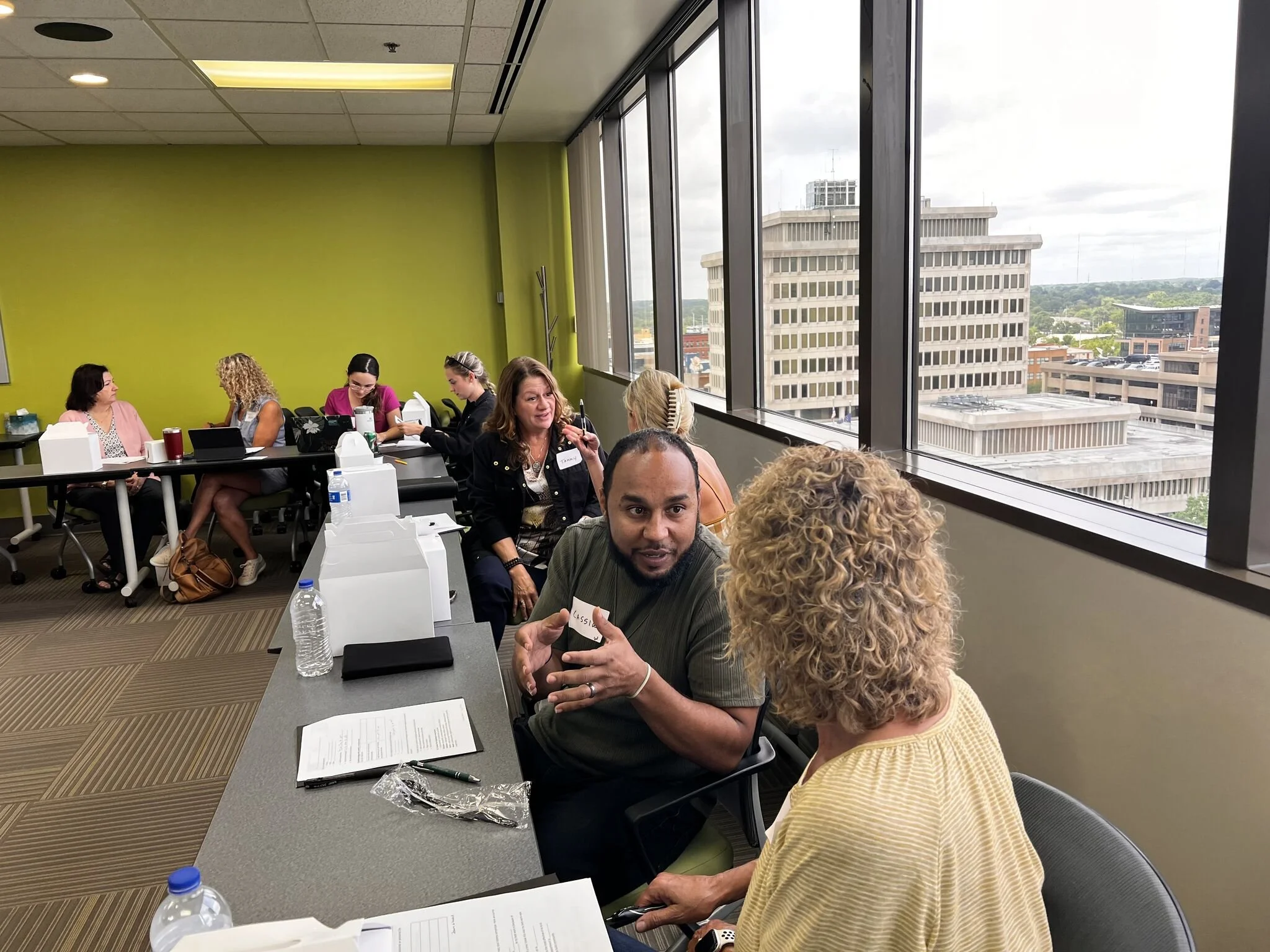COMMUNICATING MATTERS
Elevate the level of your performance
TRANSFORM
YOUR TEAM.
TRANSFORM
YOUR PERFORMANCE.
As a consultant, coach and trainer, Dr. Cheri Hampton-Farmer helps teams, organizations and individuals identify growth opportunities and provide the communication tools needed to thrive.
With Cheri’s expertise, leaders can develop and refine communication processes to strengthen their overall culture and optimize their team’s performance.
IT’S TIME TO ELEVATE.
If you’re frustrated with lack of buy-in from your team or organization, and you’re not getting the cooperation and response you’re looking for, the answer may not be their efforts, but their communication.
Do you see conflict and dysfunction in your culture? Are team members hiding failures, afraid of speaking up or feeling overlooked?
If you’re experiencing increased customer sales, silent quitting, low morale and productivity, these are just a few signs that performance is lacking and something needs to change.
WHAT IF…
Instead of the frustrations, frictions and feelings of failure you could have…
fewer people quitting
a culture the community sees as a great place to work
mission, values and vision that clearly convey your organizations core values
a team that puts out their best work
increase customer satisfaction
a true team approach rather than silos that don’t communicate
more engaged, excited team members
YOU CAN…
Engage the support you need to tackle your specific challenges while working through executable steps and seeing measurable results. Our process delivers…
training on conflict management
coaching on how to communicate effectively including listening, speaking and group discussions
systems for good feedback loops
both instruction and skills practice
overall better systems to overhaul gaps and inefficiencies
HOW CAN I HELP?
WORKSHOPS & COURSES
Maximize your impact and optimize your performance through a variety of workshop options. Cheri works with groups and teams to offer hands-on experiences that are actionable and empowering while providing tactical how-tos for growth.
GROUP FACILITATION & TRAINING
Our engaging, hands-on training goes beyond outdated lectures to deliver real transformation. This experience is customized to break down silos, boost collaboration, and create a culture and environment where communication thrives and impact grows.
COACHING & CONSULTING
Every great team needs a coach. So elevate your team and its performance with coaching. By partnering with Cheri, you’ll build a culture that is transformed through productive communication and effective systems that get the results you need most and make them last.
RETREATS &
MULTI-DAY SESSIONS
Go to the next level with retreats and multi-day sessions. Geared for leaders and team members who want to elevate their overall performance and impact, these custom-created retreats give you space to dive deeper into more training with greater results.
“[Cheri] takes great care and attention from the very first contact through end results. To assess needs, Dr. Hampton-Farmer is a master asker of questions. When I think I know what I want, her questions help reveal other underlying needs or additional help required. I have worked with Dr. Hampton-Farmer both personally and at my place of work, plus recommended her to a client. In every situation she provides help that is practical and actionable. She is one of the most positive and encouraging people with whom I’ve worked. I will never pass up an opportunity to work with Dr. Hampton-Farmer.”
—Rhoda K.

LET’S KEEP COMMUNICATING!
Sign up to receive valuable resources, updates and news straight from me to you!
—Cheri










